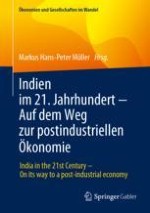Zusammenfassung
Die Bedeutung von Religion für die soziale Ordnung in Indien scheint offensichtlich: Sie bestimmt Zugehörigkeiten, leitet Alltagspraktiken an und ist der Ansatzpunkt für politische Mobilisierungen. Die Volkszählung von 2011 ergibt unter anderem eine halbe Milliarde Hindus, 89 Mio. Muslim*innen und 28 Mio. Christ*innen, nur eine vergleichsweise geringe Minderheit, 2,9 Mio. geben keine religiöse Zugehörigkeit an.
Freilich ist die die Rede von Religion bezüglich Indien nicht unproblematisch, kann das Konzept doch als christlich-westliche Kategorie entlarvt werden, welches dem Subkontinent während der Kolonialzeit oktroyiert wurde. Trotzdem hat sich Religion mittlerweile als emische Kategorie etabliert und muss schon deshalb auch für die soziologische Analyse fruchtbar gemacht werden. Dies darf nicht darüber hinwegtäuschen, dass die in Indien vorzufindende Konfiguration von Individuum, Religionsgemeinschaft und Gesellschaft sich von den Verhältnissen, die den westlichen Religionsbegriff geprägt haben, stark unterscheidet.
Diese Konfigurationen werden für die Frage nach der Bedeutung von Religion für die soziale Ordnung Indiens anleitend sein. Es wird danach gefragt, wie Religion und Gemeinschaft zusammenhängen, was von der Auseinandersetzung mit der Bedeutung von Säkularismus und Kaste nicht zu trennen ist.
Im Anschluss daran geht es darumt, wie Religion die gemeinschaftlich konstituierte Einflusssphäre verlässt und über die Hindutva-Bewegung Indien als Nation beeinflusst, eine Entwicklung, die mit der zunehmenden Wichtigkeit von Guru-Religiosität einher geht. In diesem Beitrag wird sie hinsichtlich ihrer Implikationen für das Zusammenspiel von Tradition und Moderne befragt wird.
